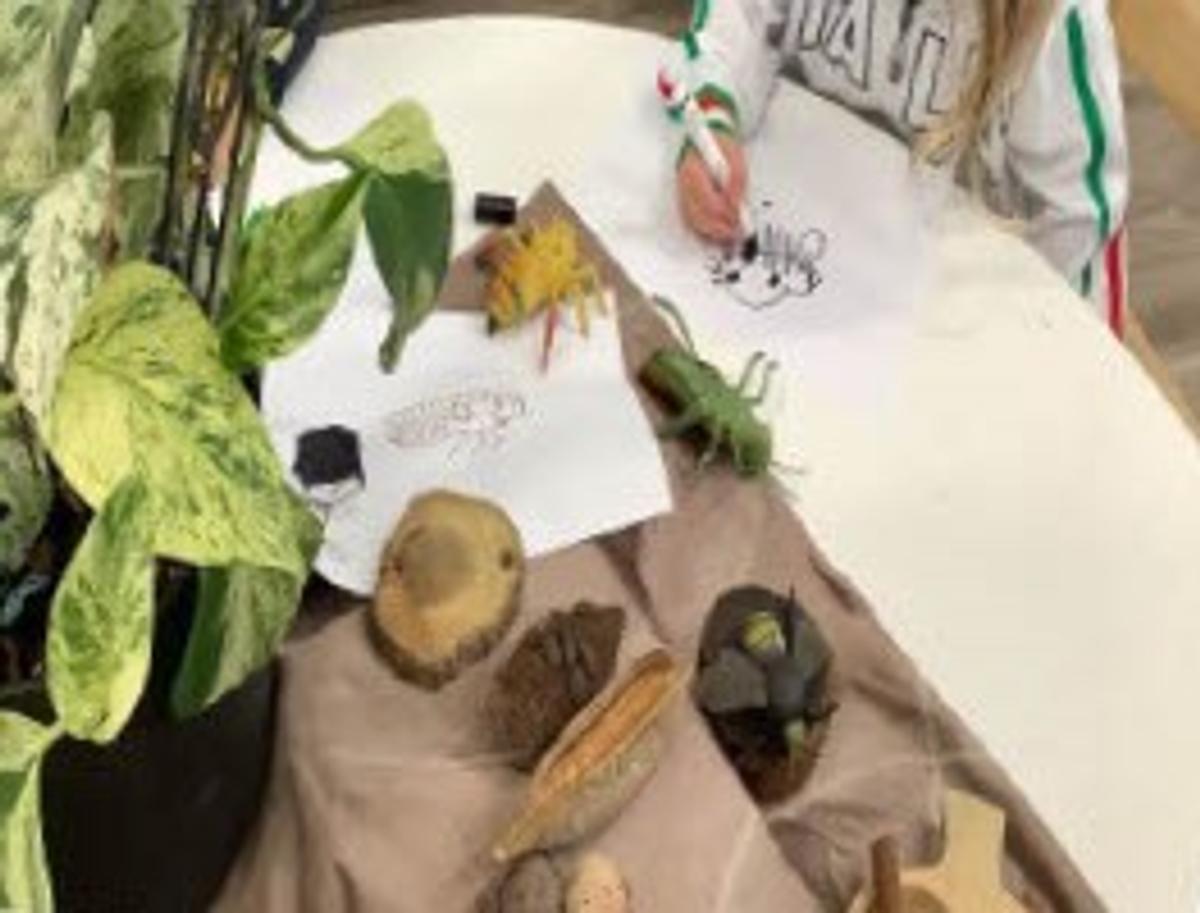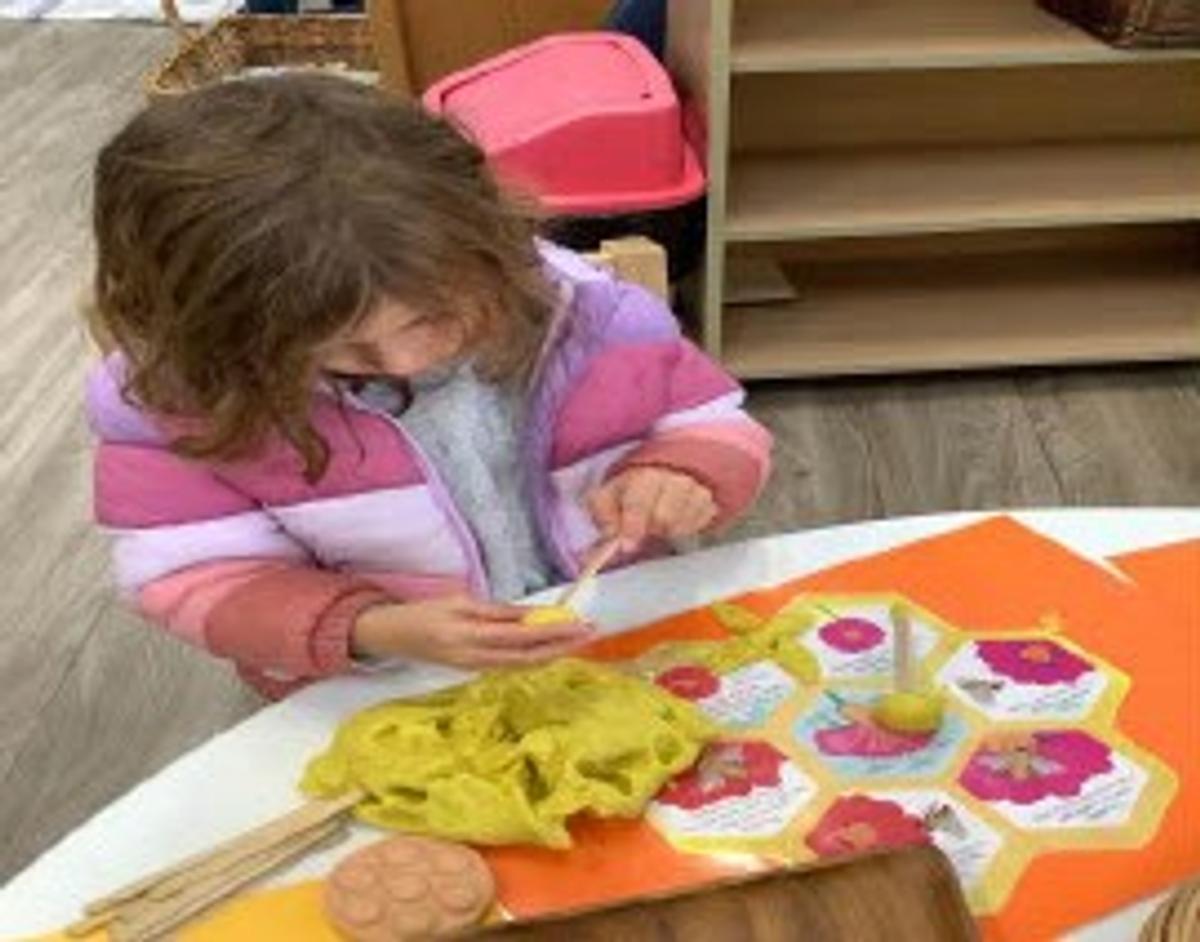Glen Education Aspendale North

The Value of Open Ended Resources to Inspire
By Zahra Said Gabriel Abdullahi,
Early Childhood Educator
The Glen Aspendale North Kindergarten teaching team intentionally designed spaces in the learning environment to promote exploration and understanding of the natural world. We provided provocations and invitations for learning based on observing children’s interests in insects.
These include our minibeasts station, providing children with resources such as magnifying glasses and natural materials (dirt, sand, pinecones, small branches, stone and leaves) to create habitats for insects.
Through these hands-on experiences, children learn about the important role minibeasts play in our ecosystem, make discoveries for themselves and take notice of and engage in discussions about all the things that make up their world.
Following children’s interests in Bees, teacher, Kate, made playdough with honey as the main ingredient. This sparked discussions about the crucial role bees play in honey production and raised awareness about the issue of bees facing extinction. This fostered a deeper understanding of the natural world, encouraged curiosity and exploration.
Children can also reflect and make connections to their learning in their lives. Calvin arrived at kindergarten one day and told us that he had discovered that “Butchy boys are also known as ‘Pill Bugs’ and that they are found in gardens all over the world”. Calvin went home, researched this with his parents, and shared his knowledge with all of us at kindergarten.
Aspects of the learning environment are also created in collaboration with children, fostering a sense of excitement, thus giving them a sense of ownership, empowerment and belonging, by involving them in choosing and collecting materials they’d like. We collected many items such as bark, twigs, leaves, pinecones, small branches and rocks from our excursion to Yammerbook reserve for our program. We incorporate their preferences into activities such as bark painting and rocks and play dough with natural elements.
These versatile, open-ended materials function in multiple ways including moulding, shaping, exploring different textures and engaging their senses. This gives children a sense of agency, competence and enhances their fine motor development. Each child engages uniquely, asks questions, participates in discussions, and investigates the materials provided, therefore enhancing their verbal, social, imaginative and cognitive abilities.


